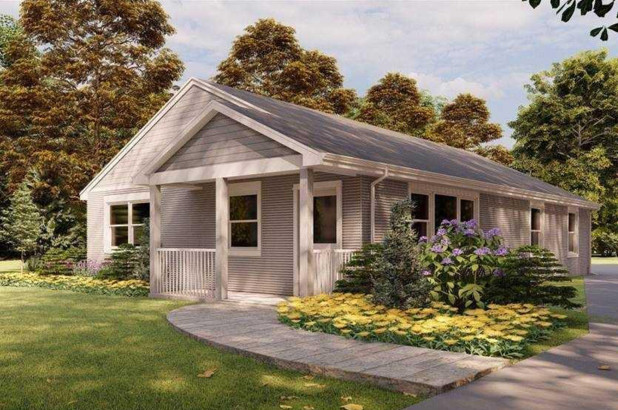
H2M architects + engineers’ Kevin Paul authored an article for InnovateLI discussing the scalability of 3D-printed homes.
Read the article here:
Putting A Dent In Homelessness, Not A Tiny One
by KEVIN PAUL
It’s been more than a month since the first 3D-printed home was put on the market in the United States, and society has had a chance to see what’s possible.
The question remains: Is it scalable? Can 3D homes become a real option for widescale affordable housing?
As a part of the team that designed and planned this nation’s first livable 3D homes, we can unquestionably say the answer is “yes.”
With an asterisk.
Every three years, the New York State Fire Prevention and Building Code Council updates its Residential Building Code, which regulates every aspect of newly built homes, from how tall a building can be to the materials used.
Local municipalities then put their own unique spin on the code, appropriate for that given community. The code is purposely flexible, so new technologies and demand for new spaces and materials can be met.
For example, prior to May 2020, no house in New York State could be constructed with less than 800 square feet of space. Then the state adopted a tiny-home provision (“Appendix Q”) allowing for more housing options in urban environments, giving rise to 200-square-foot micro-apartments and other fascinating real estate trends.
A similar provision for 3D-printed homes could be a solution to an affordable-housing crisis plaguing communities throughout the country, including communities on Long Island.
Right now, there isn’t enough affordable housing in America – or housing in general – to meet demand. This contributes to an increase in homelessness. The United States produced 7.3 million fewer homes than it needed to keep up with population growth and consumer demand between 2000 and 2015; in 2015, the U.S. Department of Housing and Urban Development reported there were only 62 affordable rental homes for every 100 “very low-income” households, and a meager 38 affordable homes for every 100 households with “extremely low incomes.”
Scaling 3D-printed homes could level the playing field the same way that William Levitt did with the creation of the original Levittown.
Levitt repurposed assembly lines to mass-produce identical homes. He sourced the same materials for each house and built the homes to spec, keeping them relatively inexpensive. This was unheard of before Levitt came into the picture, but the building code laws accommodated the work so military veterans could have suburban homes when they returned from overseas.
Adapting state codes to meet 3D-printing capabilities does the same thing for affordable housing with 21st century technology. And 3D printing could also provide shelter in areas that are vulnerable to climate disasters like 2017’s Hurricane Harvey, which decimated homes in Texas and Louisiana and left thousands homeless to this day.
Climate disasters will continue to wreak havoc on communities throughout the country. Aside from using materials that are impervious to floods, fires and high winds (like concrete), these 3D-printed homes can be built quickly; applying this technology could be a solution to quickly rebuild homes and neighborhoods, or at the very least provide safe shelter for those who need it.
H2M architects + engineers has a long history of navigating complicated zoning and code restrictions, and we believe clear restrictions are essential for quality home development. And as much as we want to keep our IP strong, we know the only way 3D-printed homes can become a true affordable-housing option is through new state provisions making their development more seamless.
As architects, these projects are more than just designs. They are proof of concept for what is possible. With this technology, the home is the model, so the only variable is the architect’s creativity and knowledge of how it should be constructed. Even in its infancy, the technology to actually build the home is there – and it’s only going to get more advanced.
We encourage state officials to engage architectural and engineering professionals from every level of home building to ensure the next iteration of the New York State Residential Building Code meets 3D-printing capabilities. Society needs a solution to the affordable-housing crisis, and 3D-printed homes are no longer a novelty. They could be the key.
Kevin Paul is vice president and discipline director in charge of private-sector real estate at H2M architects + engineers.
Read the article on InnovateLI



